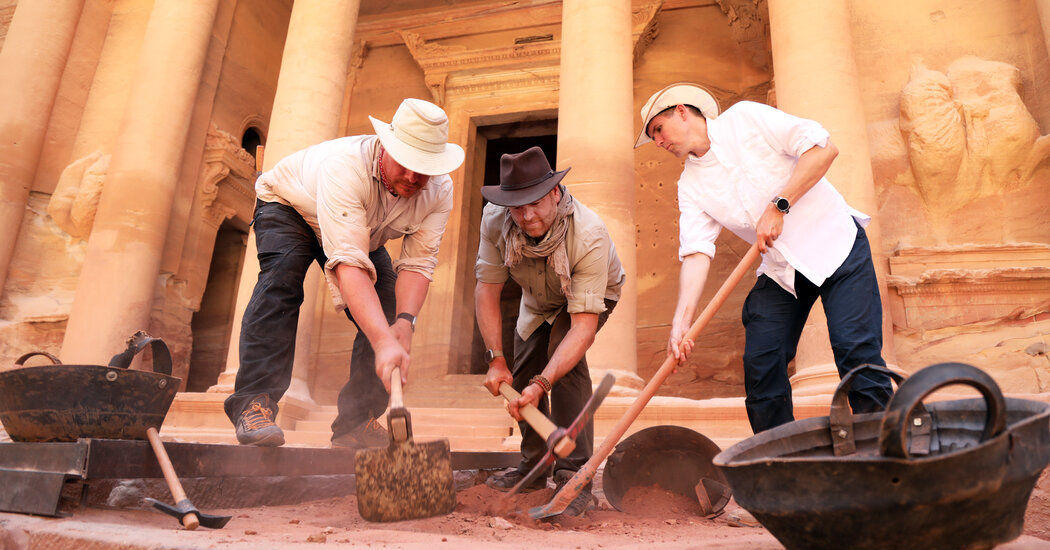A recent excavation has unearthed 12 human skeletons and a chamber of grave offerings near Petra’s Treasury building, a UNESCO World Heritage site.
By the time Dr. Richard Bates swept his radar device over the sandstone of Petra’s ancient Treasury building, it had been more than two decades since anyone had so deeply probed the stone city’s grounds.
For nearly as long, archaeologists had been stymied by a maddeningly stubborn mystery. In 2003, they had discovered hidden tombs around the city’s ornate, famed Treasury structure, carved into Petra’s canyon walls in the first century B.C. But blocked by red tape and a lack of funding, they had never been able to fully probe the other side.
That changed earlier this year, when Dr. Bates and a team of researchers were given permission to run powerful, ground-penetrating radar within the delicate Treasury monument, known locally as Al Khazneh.
“We were quite shocked that they did give us permission to go in and survey,” said Dr. Bates, a geophysicist and professor at the University of St. Andrews in Scotland. “This was stunning data.”
Now, archaeologists have answers to their longstanding hunch: An excavation has revealed an untouched tomb in Petra’s famed Treasury structure, containing 12 human skeletons and a wide collection of grave offerings, discovered just opposite of the initial find from 2003.
